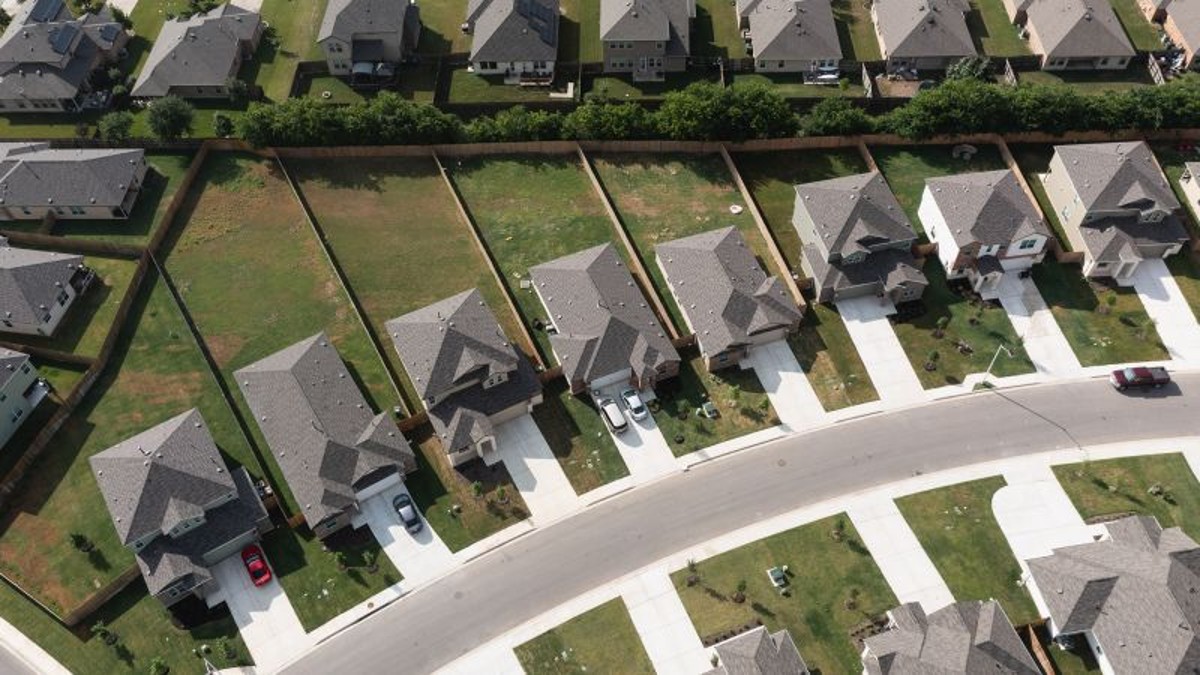(Trends Wide) — The US real estate market is in the midst of a major change. After two years of stratospheric appreciation, home prices have peaked and are falling.
But what homebuyers and homeowners alike want to know is: How much lower will prices go?
The short answer: Prices are likely to fall further, but not as much as they did during the housing crash. From the 2006 high to the 2012 low, national home prices fell 27%, according to the S&P CoreLogic Case-Shiller Indices, which measure US home prices.
“It was different in 2008, 2009 because that drop in prices was due to a push from sellers,” said Jeff Tucker, a senior economist at Zillow. “Because of foreclosures and short sales, there were a lot of extremely motivated sellers who were willing to take a loss on their homes.”
Furthermore, that real estate crash occurred at a time when the inventory of homes for sale was four times greater than it is now. Current inventory remains substantially lower than pre-pandemic levels, which has increased competition. And that keeps prices relatively strong.
“I would be surprised to see prices fall below where they were in 2019,” Tucker said. “There was some overheating in the housing market in 2021 through this spring that pushed prices above what the fundamentals would support. Now they are going down.”
With mortgage rates more than doubling since the start of this year, the math for a homebuyer has changed considerably. The monthly principal and interest mortgage payment on the median home is up $930 from a year ago, an increase of 73%, according to Black Knight, a mortgage data company.
How much will prices drop?
When rising mortgage rates are factored in, along with soaring home prices and wages that aren’t rising as quickly, buying a home is less affordable now than it has been in decades, according to Black Knight.
However, there may be some relief in sight for buyers.
Goldman Sachs economists expect home prices to decline 5% to 10% from the peak reached in June.
Wells Fargo recently forecast that national median single-family home prices will fall 5.5% year over year by the end of 2023.
Wells Fargo economists estimate the median price of an existing single-family home will be $385,000 this year, up 7.8% from last year, but the growth will be much less than the 19% year-over-year increase seen in 2021. .
Economists expect the median home price to fall to $364,000, a 5.5% decline from this year. They predict that prices will recover and rise again in 2024, with the median price rising 3.3% to $376,000 by the end of 2024.
“The main driver behind the housing market correction so far has been sharply higher mortgage rates,” the Wells Fargo researchers noted. “If our forecast for rate cuts by the Fed comes to pass, mortgage rates are likely to ease slightly just as cooling inflationary pressures drive real income growth. A modest improvement in sales activity should then follow, reinvigorating home price appreciation going into 2024.”
Location, location, location
Ultimately, where prices fall will depend on where you live.
Unlike the surge in prices during the pandemic that sent home values soaring in markets across the country, the cooling will be more regional, Tucker said. The dips will be felt most deeply in places where there has been the most progress during the pandemic, many of them in the West and Sunbelt, including cities like Austin, Phoenix and Boise, she said.
“Nationally, we could see a 5% decline from the peak,” Tucker said. “But prices will decline more in the West and there will be less of a decline in the Southeast.”
In September, month-over-month home prices fell in several pandemic hotspots, including Phoenix, down 2.3%; Las Vegas, down 1.9% and Austin, down nearly 1%, according to Zillow.
And Boise, Idaho, where prices have risen nearly 60% during the pandemic, is already seeing yearly declines, down 3.9% year over year in September, according to Zillow.
“Several metro areas, especially in the West, will see some year-over-year price declines this spring,” Tucker said. “That’s going to be the worst time for comparison because that’s when a lot of markets peaked.”






